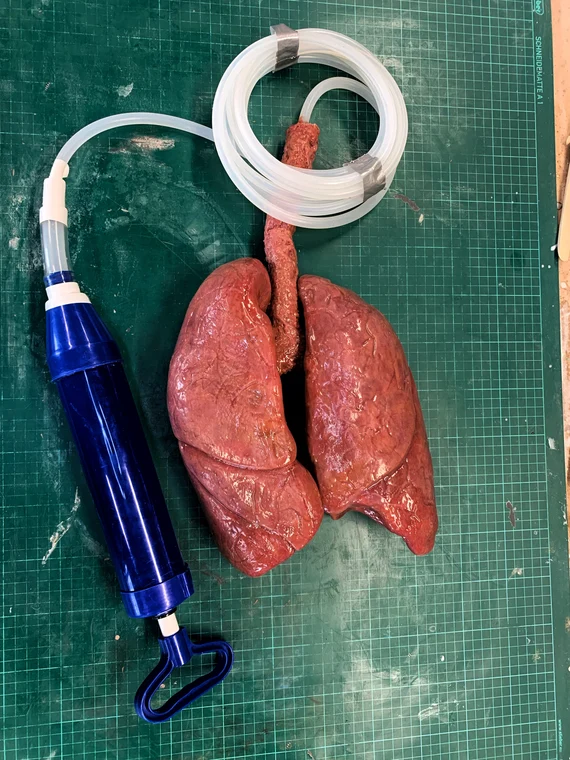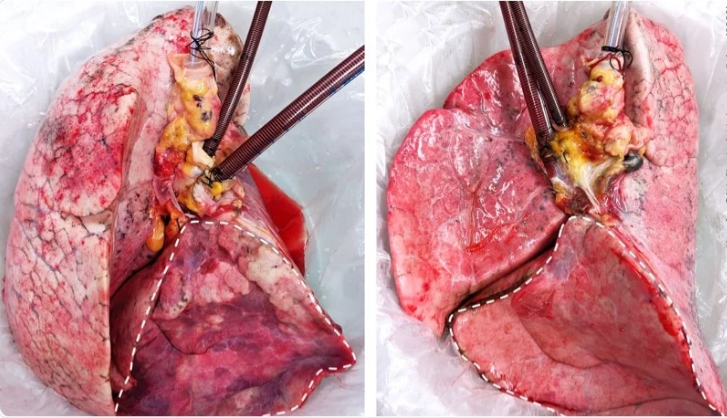The Amazing World of Real Human Lungs: Nature’s Breathing Machines
When you think about it, our lungs are pretty incredible. They’re like nature’s own air filters, helping us breathe in fresh air and exhale the bad stuff. Let’s dive into the fascinating world of real human lungs and discover why they’re so special. Real human lungs for sale
What Are Human Lungs?
Human lungs are two spongy organs located in the chest. They work together to bring oxygen into the body and remove carbon dioxide, a waste gas. Imagine them as two soft, fluffy sponges that expand and contract with every breath. This simple process is essential for keeping us alive!
How Do Lungs Work?
Ever wonder how your lungs manage to grab oxygen from the air? It all starts when you take a breath. As you inhale, air travels down your windpipe and splits into two main bronchial tubes, one for each lung. These tubes branch out into smaller airways called bronchioles, leading to tiny air sacs called alveoli.
Think of alveoli as tiny balloons. When you breathe in, they fill up with air. Each balloon is surrounded by tiny blood vessels. Here’s the cool part: oxygen from the air inside those balloons passes into the blood, and carbon dioxide from the blood goes back into the balloons to be exhaled. This swap happens effortlessly and keeps our bodies fueled with fresh oxygen.
The Structure of Lungs
The right lung is larger than the left lung. Why? The left lung makes room for the heart, which sits a bit to the left side of the chest. Each lung has different sections, known as lobes—three in the right lung and two in the left. This structure helps the lungs maximize their space and efficiency. It’s like a well-organized closet where everything has its place!
Lungs and Health
Healthy lungs are key to a healthy life. Poor lung health can lead to serious problems, such as asthma, bronchitis, or even lung cancer. Keeping your lungs in top shape is crucial. Staying away from smoking, reducing exposure to pollution, and getting regular exercise can make a big difference. Think of your lungs as a car engine; if you take care of it, it’ll run smoothly for years.
The Fascinating Facts About Lungs
Here are some mind-boggling fun facts about human lungs:
- The surface area of the alveoli in your lungs is about the size of a tennis court! That’s a lot of space for gas exchange.
- Lungs can hold about 6 liters of air, but we usually only use about 0.5 liters with each breath.
- Your lungs are constantly working, even when you’re resting. They keep breathing without you even thinking about it, like an automatic pilot!

Structure and Function
Real human lungs are remarkable organs located in the thoracic cavity, responsible for gas exchange. They consist of a pair of spongy, pinkish-gray tissues with a highly complex structure. Each lung is divided into lobes, with the right lung having three lobes and the left lung having two. The lungs are composed of millions of microscopic air sacs called alveoli, which provide a vast surface area for the exchange of oxygen and carbon dioxide.
Pulmonary Circulation
The lungs are perfused by the pulmonary circulation. Deoxygenated blood from the body enters the right atrium of the heart and is pumped into the right ventricle. The right ventricle then contracts, sending the blood into the pulmonary arteries, which carry it to the lungs. Within the lungs, the pulmonary arteries branch into capillaries that surround the alveoli, allowing for gas exchange.
Gas Exchange
Gas exchange occurs across the thin walls of the alveoli and capillaries. Oxygen from the inhaled air diffuses into the blood, while carbon dioxide from the blood diffuses into the alveoli. This process is facilitated by the vast surface area of the alveoli and the thinness of the capillary walls.
Respiratory Control
The lungs are innervated by the vagus nerve, which sends signals to the respiratory center in the brainstem. The respiratory center regulates the rate and depth of breathing in response to changes in blood pH and oxygen and carbon dioxide levels. This ensures that the body maintains appropriate gas exchange and acid-base balance.
Health and Disease
Real human lungs are susceptible to various diseases and conditions. Common respiratory ailments include asthma, chronic obstructive pulmonary disease (COPD), pneumonia, and lung cancer. These conditions can disrupt gas exchange, leading to respiratory distress and other health complications. Maintaining lung health is crucial for overall well-being and longevity.
Conclusion
Real human lungs are remarkable organs that play a crucial role in our overall health and well-being. They work tirelessly every day, allowing us to enjoy life, from running and playing to simply sitting back and relaxing. So, the next time you take a deep breath, remember just how amazing your lungs really are! They truly are nature’s breathing machines, tirelessly keeping us alive with every puff of air.

